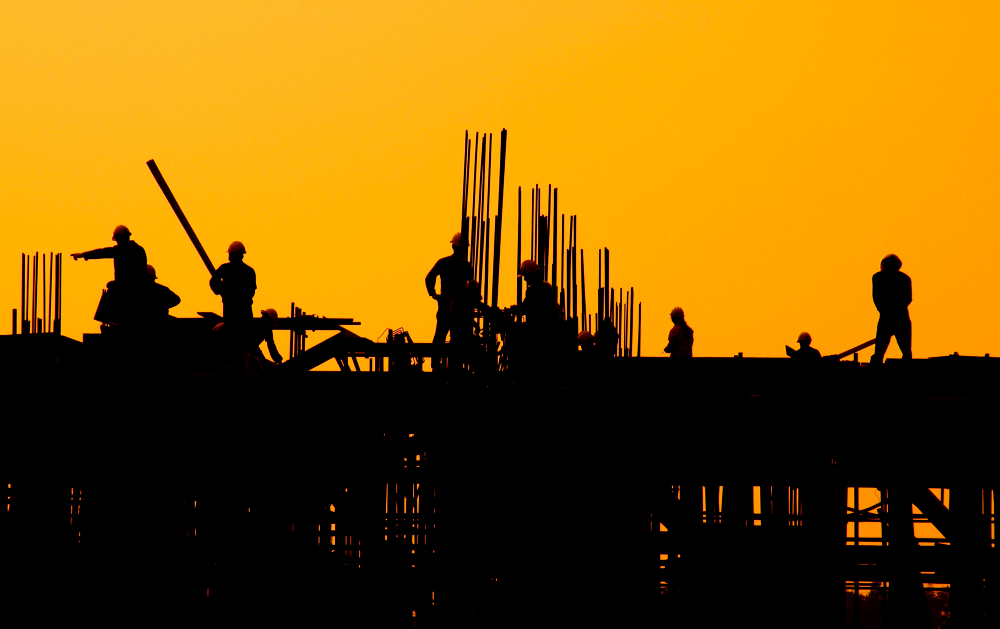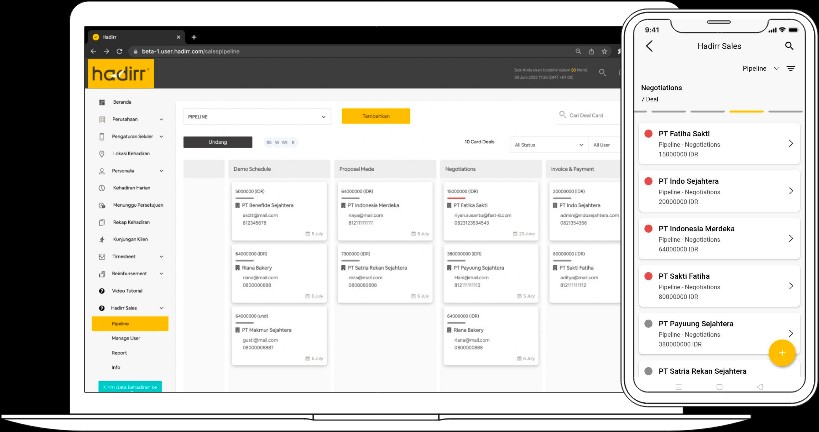The Expanding Middle Class in Indonesia: 5 Fast-Growing Cities
Indonesia’s economic landscape is undergoing a profound transformation. While Jakarta has long dominated as the nation’s commercial heart, a new distribution of wealth is quietly — but rapidly — reshaping the country. Today, the expanding middle class in Indonesia is rising fastest not in the capital, but in a cluster of secondary cities whose growth now outpaces Jakarta’s.
This shift marks a pivotal chapter in the nation’s development and opens unprecedented opportunities for businesses ready to scale beyond the capital’s crowded, high-cost markets.
Who is Indonesia’s Middle Class?

Before examining city-level growth, it’s essential to understand who falls within Indonesia’s middle class — and why this group has become the engine of national economic progress.
Using Statistics Indonesia (BPS) and World Bank methodology, Indonesia’s middle class consists of households with monthly expenditure between Rp 2.04 million and Rp 9.91 million per capita (roughly US$125 to US$608). These households are economically secure, with low risk of falling back into poverty — an important distinction from the vulnerable or aspiring middle class.
Yet in practice, the median middle-class household spends closer to Rp 2.85 million monthly. It means most families are near the lower end of the range. They aren’t “wealthy” by global standards, but they enjoy stability, formal employment, and consistent purchasing power.
As of 2024, Indonesia’s middle class makes up 17.13% of the national population — around 47.85 million people. Though down from 21.45 % in 2019 due to inflation and economic headwinds, the distribution of this population is changing dramatically. The middle class and aspiring middle class together represent 66.35 % of Indonesians. Yet, they generate an outsized 81.49% of all household consumption. Their influence on the economy is far larger than their numerical share.
Also Read: Why Foreign Companies in Indonesia Struggle to Hire Top Locals
How the Expanding Middle Class in Indonesia Drives Business Growth

Indonesia’s middle class isn’t merely a high-consumption demographic — it is the country’s core economic engine across multiple dimensions. The middle class growth in Indonesia has become central to the nation’s economic narrative. Their impact is amplified through their consumption patterns, entrepreneurial roles, and participation in the formal economy.
Dominant Consumers
The most visible contribution of middle class consumer behavior is purchasing power. The group alone accounts for 38.3% of total household consumption, driving demand across:
- Non-food goods and services: Unlike lower-income groups that prioritize food expenditure (60–70%), the middle class spends more on education, healthcare and wellness, entertainment and recreation, vehicles and transportation, and technology
- Retail and e-commerce: The middle class pioneered digital commerce adoption in Indonesia; tier-2 and tier-3 city consumers showed e-commerce growth jumping from 32.1% in 2020 to 39.0% in 2022
- Real estate and housing: Middle-class demand fuels residential development, property investment, and construction sectors
- Financial services: Credit access, insurance, and savings products are predominantly consumed by this demographic
Historically, middle-class consumption grew at 12% annually from 2002 to the early 2020s — one of the strongest demand engines in Southeast Asia. Each non-food purchase triggers a chain of downstream economic activity — unlike basic food consumption, which has limited multiplier effect.
Productive Workforce and Entrepreneurs
The middle class is also Indonesia’s formal workforce and entrepreneurial backbone, characterized by:
- Stable salaried employment in professional, government, and corporate sectors
- Ownership of SMEs, which drive innovation and job creation
- High skill levels, from engineers to teachers and healthcare workers
- Job creation multipliers, as middle-class entrepreneurs hire across income segments
The expanding middle class in Indonesia is driving higher productivity, strengthening the nation’s competitiveness and overall economic resilience.
Tax Contributors and Economic Stabilizers
Often overlooked is their role in stabilizing the economy, including:
- Tax contributions, rising from 3.48% of expenditure in 2019 to 4.53% in 2024
- Bank savings and deposits, which support financial system stability
- Counter-cyclical spending, which prevents demand collapse during downturns
Also Read: 9 Current Trends in Indonesia’s Food & Beverage Industry
The Expanding Middle Class in Indonesia Beyond the Capital

Today, Indonesia’s urban middle class population drives nearly half of the country’s total spending — yet this economic power is no longer concentrated in Jakarta. It is rapidly shifting toward tier-2 and tier-3 cities. Recognizing this redistribution, the government has accelerated infrastructure development and regional economic reforms to support more balanced growth across the archipelago.
Jakarta, with a GDP growth rate averaging 6.3% over the past five years, has long served as Indonesia’s dominant economic engine. But a new reality is emerging: several secondary cities are not only catching up. They are surpassing the capital’s economic momentum.
Medan, Makassar, Bandung, and Surabaya — the primary hubs of middle-class consumer growth outside Jakarta — are recording annual economic growth rates of 7.5%, consistently higher than Jakarta’s multi-year average. A 1.2-point lead may appear modest, but compounding growth over time significantly shifts the nation’s economic gravity.
1. Surabaya: Indonesia’s Second Economic Powerhouse
Surabaya stands as Indonesia’s second-largest city with 2.85 million residents. Its diverse economy — spanning manufacturing, trade, logistics, and services — forms a strong foundation for sustained middle-class income growth. The city’s real estate sector has also posted low double-digit price increases annually in recent years, reflecting strong demand from emerging middle-income households.
Economic Growth Drivers:
Surabaya achieves approximately 70% of Jakarta’s GDP per capita while maintaining a higher growth trajectory of ~7.5% annually. This means professionals and business owners in Surabaya are accumulating wealth faster than their Jakarta counterparts, even if absolute income levels remain lower.
A lower cost of living further amplifies purchasing power. Real estate development — backed by domestic and international investors — increasingly targets middle to upper-middle-class buyers, providing a clear proxy for rising middle-class consumer demand.
2. Bandung: The Overlooked Middle-Class Hub
Bandung’s economic performance has been striking. Over the past five years, the city recorded middle-class economic growth at 7.9% annually — one of the highest in Indonesia and well ahead of Jakarta. Real estate prices have grown at a steady ~7% yearly, signaling long-term investor confidence and strong middle-class purchasing power.
Economic Growth Drivers:
Major property developers are aggressively entering Bandung, launching residential projects tailored to middle and upper-middle-class buyers. The city’s proximity to Jakarta — combined with substantially lower housing costs that boost real purchasing power — and a vibrant cultural scene make Bandung increasingly attractive to young professionals and established entrepreneurs looking to build wealth.
Rising e-commerce adoption and increasing consumer spending in Bandung mirror the broader surge in middle-class activity across Indonesia’s tier-2 cities.
3. Makassar: South Sulawesi’s Economic Gateway
Makassar has emerged as one of Indonesia’s fastest-growing urban centers, recording middle-class demographic expansion at 8.5% annually — the highest among the five cities. As a major port and commercial hub, Makassar enjoys strong trade flows and deepening economic integration across Eastern Indonesia.
Economic Growth Drivers:
A rapidly expanding middle class is driving surging demand across retail, hospitality, education, and real estate sectors. Makassar’s digital economy is accelerating quickly, with rising smartphone penetration and e-commerce adoption creating new income opportunities for urban professionals.
Strong construction activity and the development of new business districts and shopping centers further signal robust middle-class spending and heightened consumer confidence.
4. Medan: Northern Sumatra’s Rising Star
Medan serves as Indonesia’s key gateway to international trade. Its strategic location has attracted substantial foreign and domestic investment, creating a dynamic entrepreneurial ecosystem. Middle-class spending growth in Medan is fueled by expansions in palm oil trading, logistics, manufacturing, and financial services.
Economic Growth Drivers:
With a population exceeding 2 million, Medan’s middle class is rapidly adopting digital financial services and e-commerce platforms — indicators of modernization and an advancing urban economy. The city’s real estate sector continues to attract developers launching middle-class housing projects.
Strong consumer demand across retail and services underscores the rise of a resilient middle-class segment in North Sumatra.
5. Balikpapan: East Kalimantan’s Emerging Economic Hub
Balikpapan has recently positioned itself as one of Indonesia’s fastest-growing secondary cities. In Q1 2025, Balikpapan recorded economic growth of 7.97% year-on-year. The city is among the nation’s top performers and well above Jakarta’s trajectory. According to McKinsey Global Institute, Balikpapan is one of Indonesia’s “small middleweight cities” projected to sustain annual growth rates above 7% by 2030.
Economic Growth Drivers:
Balikpapan’s momentum is driven by construction activity — including developments related to the new capital city — rising government expenditure, and the establishment of new industrial operations. Strategic geographic position and major infrastructure investments create fertile conditions for middle-class income growth and expanding consumer markets.
Rising consumer activity, increasing construction demand, and heightened investor interest reflect the emergence of a strong middle-class ecosystem in East Kalimantan, a region historically overshadowed by Java-based cities.
Also Read: A Foreign Business Guide to Indonesia’s Product Certification
What This Means for Business Strategy

The expanding middle class in Indonesia follows predictable economic patterns. With 76% of the middle to upper-middle class living in urban areas — mostly in Java — growth in secondary cities is accelerating.
Digital adoption in tier-2 and tier-3 cities reflected in e-commerce growth from 32.1% in 2020 to 39.0% in 2022, signals broader middle-class consumer activity outside major metros. Infrastructure upgrades and improved connectivity further support this shift by enabling professionals to access higher-paying jobs while enjoying lower living costs.
For businesses, the rise of secondary cities offers multiple advantages, including:
- Higher purchasing power growth rates
- Lower competition
- Untapped consumer segments
- Digital-first populations
- Regional development incentives
The expanding middle-class in Indonesia also indicates shifting priorities: education, healthcare, home ownership, digital services, and quality-of-life upgrades. These categories represent sustainable, long-term growth opportunities.
Capturing Opportunity in the Expanding Middle Class in Indonesia
Indonesia’s growing middle class is not a temporary trend — it’s a long-term structural transformation. While Jakarta will remain the economic center, the momentum is increasing with Surabaya, Bandung, Makassar, Medan, and Balikpapan.
For businesses looking to scale, expansion into these cities offers superior risk-reward balance: faster economic growth, lower costs, and less saturated competitive environments.
This shift mirrors the evolution seen in other major emerging markets, where secondary cities eventually became the engines of national prosperity. Indonesia is well on that path.
Manage Your Growing Sales Force Across Indonesia’s Expanding Markets with Hadirr

As businesses expand across Indonesia’s booming secondary cities, managing distributed teams becomes increasingly complex. Tracking sales visits to prospective customers, managing employee shift schedules and overtime, and coordinating multi-location operations can quickly overwhelm traditional systems — especially when sales teams operate independently across regions.
Hadirr simplifies business management across all your Indonesian operations. Whether you’re handling digital attendance for employees across cities, tracking shift scheduling patterns, monitoring sales pipeline progress, or recording customer visits in real-time, Hadirr integrates everything into one powerful mobile and web platform.
Also Read: Tapping into Indonesia’s Special Economic Zones Advantage
What Hadirr Brings to Your Multi-City Strategy:
- Real-time Sales Pipeline Management: Monitor deal progression from prospecting through close, with automatic updates as your sales team visits customers
- Mobile-First Field Operations: Your team records attendance, processes customer visits, and logs overtime directly from the field — no back-office delays
- Integrated Attendance & Shift Management: Handle complex shift scheduling, automatic overtime calculation, and seamless integration with payroll systems
- Automated Sales Reporting: Eliminate manual report compilation; Hadirr generates comprehensive sales and activity analytics automatically
- Distributed Team Visibility: Track sales mobility, customer interactions, and performance metrics across all your locations instantly

For companies scaling across Indonesia’s expanding middle-class markets, Hadirr Sales CRM transforms field operations from an administrative bottleneck into a competitive advantage.
Discover how Hadirr helps businesses like yours optimize sales teams, streamline operations, and unlock growth across Indonesia’s secondary cities. Start your free trial today and manage your employees and customers more efficiently than ever.


